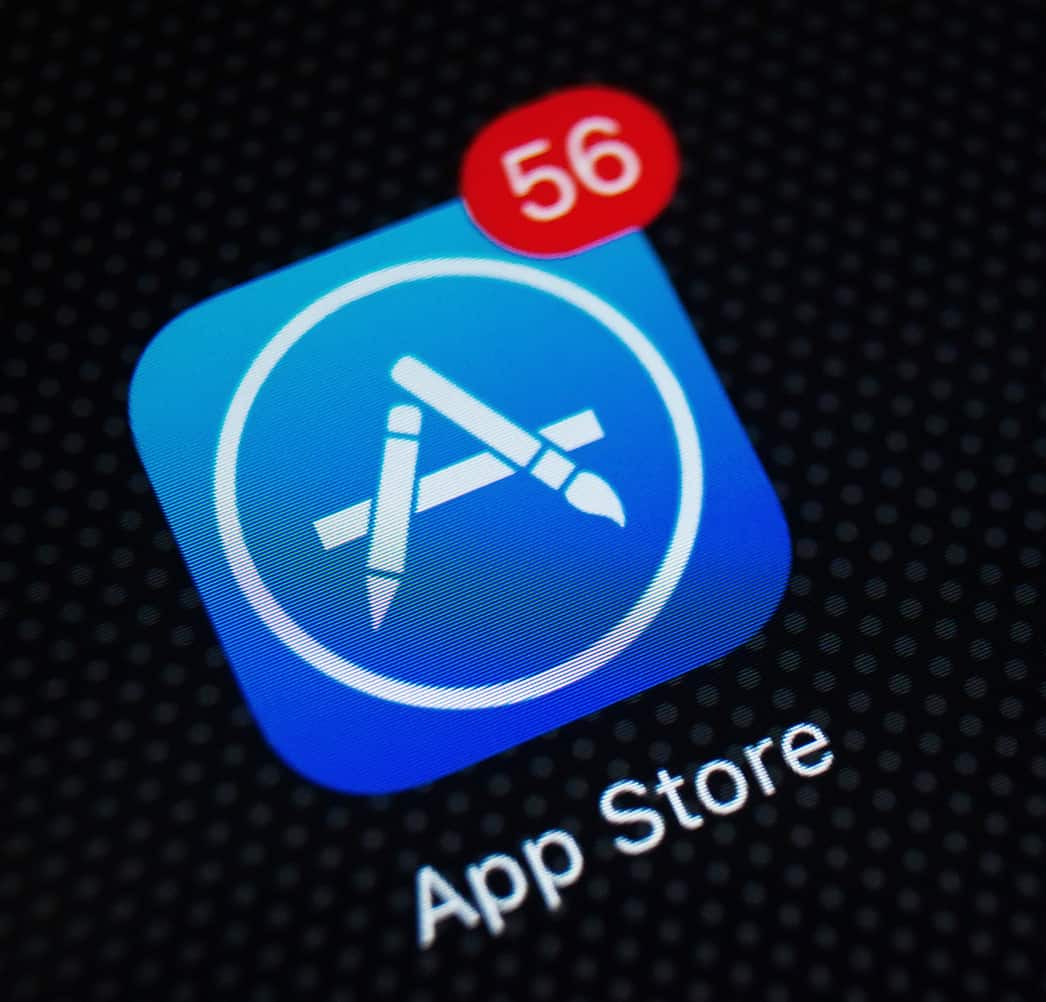ASO: App Store Optimization – Secret Weapon in Mobile Video Game Marketing
Why care, you may be asking? When influencing and marketing to gamers, App Store Optimization or ASO is a key tenet. ASO is key to organic Discoverability in mobile app marketing, video game marketing . To reign supreme in the fiercely competitive application marketplace, it is crucial you refine your approach. Start diving head-first into the advantages of ASO to maximize your chances of succeeding on the app store.
To do that, you will have to first understand the nitty-gritty of App Store Optimization. And that’s exactly what we are going to do here in this post. Let’s cut to the chase and dive right in!
What is App Store Optimization?
App Store Optimization is also known as mobile app SEO. For a video game marketing professional, the entire goal of App Store Optimization is to improve the ranking of mobile applications within app stores like the App Store, Google Play, Windows store, etc. Mobile apps specifically created for iOS, Android, and Windows phones. Not the only key to Discoverability. But critical to organic discoverability that the mobile marketer doesn’t have to PAY for.
What exactly happens when you rank your applications on top of these Online application stores? There are many goals to ASO. ASO increases your brand exposure. ASO also generates more positive app reviews and ratings. Which boost the audience engagement with the app. This in turn creates MORE organic discovery of the app.
Investing in App Store Optimization is a great decision. Given the incessant growth of mobile and Internet technologies, people are going to need mobile solutions in their daily lives. The number of app downloads has only been increasing if you look at the last 10 years. In the last year itself, a total of 204 billion apps were downloaded across the world which is a 6% increase from 2018.
Thus, it makes complete sense to invest your time and resources into App Store Optimization.
Important Factors For App Store Optimization
There are many factors that you will have to consider if you want to perfect your App Store Optimization. Let’s talk about these factors in detail.
-
Title
The title is what most people use to identify your application in an App Store. Apart from that, it also helps you to improve your rankings because a relevant title (that includes the target keyword) can help you rank at least 10% higher. Make sure the title is unique, descriptive, and keyword-rich.
Let’s compare two possible titles.
VERSION A: ASO: App Store Optimization – Secret Weapon in Mobile Video Game Marketing
VERSION B: ASO in Video Games
Clearly Version A is targeted at a more granular long tail search for keywords like “App Store Optimization” and “Mobile Video Game Marketing.”
-
Keywords

Keywords are important to your App Store Optimization quest. Just like in SEO. You will need to put your most important keywords while ensuring that you don’t overdo it. Keyword stuffing can get your app penalised by Google. Make sure you do proper keyword research to ensure your product falls in the right list of applications.
I’ve always had great results benchmarking my top competitors. The above shows a simple keyword profile that shows keyword research, including Apple Search Ads. This informs competitive offensive and defensive strategies. Which in turn helps the video game marketing professional find greenfield and under-addressed keyword opportunities.
-
Description
The app description is pretty much like the content you put on your site’s landing page. If you are successful in making a user click on your app, that description must be able to close the deal for you. This can be done if the description tells the customer what the app does, the problem it solves, how easier it is to use the app, and why the app is worth the price.
-
Screenshots
You will never go wrong with high-quality screenshots. It is a crucial factor of your app store page change the screenshot adds to its visual appeal. You should definitely use this part of the page’s real estate to your advantage by taking screenshots of the key benefits and most engaging parts of the app.

-
App Preview Video
Most app stores will allow you to upload 30 second long videos to showcase your app’s features and benefits. The best way you can use the app review video feature is by uploading recordings of in-app experience and showing what the users can expect from the app’s UX.
-
App Category
Putting the app in the right category will not only help the app store index your app correctly, it will also help the users understand what your app does. The app category should best describe your mobile application. However, if you want it to rank quickly, you must go for a category that is least competitive and put your highly optimized application in it.
-
App Icon Design
The app icon is one of the most significant parts of your app. It is how your users will recognise you on their phones. So, you must take your time to come up with a great icon design. Most importantly your Icon should be engaging and eye-catching.
-
App Reviews
Online users are always looking for what other people have to say about your application. It is therefore important that you collect positive app reviews and encourage your existing customers to leave their feedback for the app.
Take a look at the below. This screenshot from AppAnnie, shows the aggregate ratings and reviews, aka Star Ratings for Minecraft, unified across the App Store, Google Play and Microsoft Store. It becomes abundantly clear where the game is loved and highly rated (5-star reviews) vs poorly received (1-star reviews)

-
App Store Analytics
There are many powerful App Store analytics tools that you can use to design your mobile marketing strategy to perfection. The tools will help you get actionable insights and allow you to make changes that will eventually Boost Your App Store rankings. Some of these App Store analytics tools are Sensor Tower, Appstatics, Appnique, AppAnnie, Appfigures, Applyzer, and more.
See below for a high-level App Store analytics dashboard for Darkness Rises. In one place you can clearly see the top keywords – which directly impact Discoverability – both at the CATEGORICAL level (RPG, MMO, MMORPG) in addition to the COMPETITION targeted by the game (Assasin, Diablo, Skyrim, etc)
Not but not least, in this same single view, you can also get an estimate of the game’s actual download volume and revenue, in one shot.

What is Search Engine Optimization?
Search Engine Optimisation is the process of optimising your online presence to create better user experience and drive more traffic towards your business website.
It can help your website get quality traffic from search engines. Since you want relevant traffic to your website, it is important that you optimise your site with the relevant keywords. Keywords are essentially the terms and phrases your target audience uses when searching for your products online.
Search Engine Optimisation or SEO is the most important part of any digital marketing strategy because it prepares your site for the incoming traffic. Since all your digital marketing efforts are going to revolve around your business website, it is important that you optimise your site to create a solid foundation for your online marketing campaigns.
Factors Responsible for Search Engine Optimization
Let’s discuss the various factors responsible for search engine optimization.
-
Page Title + H1 Tags
One of the most crucial On-Page SEO factors is the page title. The page title should be optimized by using your primary keyword in it. Website crawlers are always looking for your title tag to determine the content and intent of your page. Let’s say the page is about hiking. The page title appears on the tab where the website is opened while the heading tag is what appears on the page. Let’s say the blog is on xyz.com’s blog. The page title will read something like ‘10 Best Hikes in Colorado | XYZ Blog’. However, the H1 will just have ‘10 Best Hikes in Colorado’.
-
Page URL
The page URL can be optimized by including your primary keyword in it. You should make sure that you don’t use any special characters in the URL. It should be kept short so that it is easier for both the users and search engines to read and remember the URL.
While a keyphrase ‘battle royale’ shows that a user is looking for battle royale games, a keyphrase ‘battle royale monetization’ clearly shows that the intent of the search is to find the monetization opportunities of battle royale games. The page URL for such a query for the former should be ‘www.xyz.com/games/battleroyales’ while for the latter, it should be something like ‘www.xyz.com/games/battleroyales/monetization’. This is perfectly structured and easy to remember.
-
Header Tags
The use of sub-heading and header tags is important to give your content a definite structure. This will also give you an ample opportunity to place your primary and secondary keywords inside your content.
-
Keyword Placements
Keyword placement can be perfected by placing your keywords in the first hundred words of the content. Once you do that keep placing your keywords two to three times every hundred words. The keyword placement should be as natural as possible to ensure a seamless reading experience for your users.
-
Meta Descriptions
Meta descriptions are an essential part of the On-Page SEO checklist because it allows your content to stand out in this search engine. It also is a crucial role in boosting your click-through rate.
It gives online users an idea of what they can expect in the content. It is important to have a meta description that is around 50 to 160 characters long. The meta description should have a natural and active voice and should resist being spammy.
Like for a company putting puppies for adoption, they can use a description like ‘Find an Australian Shepherd rescue or search your local shelters and rescues for an Australian Shepherd puppy or dog for adoption’. The keyword here is clearly ‘Australian Shepherd Puppy’.
-
User Experience
SEO is a process that helps to boost the user experience of your site. You will first have to make your content extremely easy to understand. Make sure there are no broken links in your content. The font type, size, and color should be optimized to boost readability. Not just that, the buttons on your site and the overall site navigation should be optimized to reduce the bounce rate.
-
LSI Keywords
LSI latent semantic indexing keywords are essentially the keywords that are semantically related to your primary keyword. Optimizing the content using LSI keywords will definitely help your content boost its quality and get higher ranking on search engines.
-
Keyword Cannibalization
Keyword cannibalization should be avoided at all times because you don’t want to confuse search engines. If the crawlers find two or more web pages having the same primary keyword, it will make sure neither of the pages are ranked. Each page of your website should have one primary keyword.
-
Loading Speed
The attention span of online users is reducing significantly. This is an alarming situation for site owners that don’t optimize it for loading speed. If you want your visitors to stay on your site for a long time, you will have to consider speeding up the user experience.
-
Mobile-First Indexing
All the above On-Page SEO changes will not work if you don’t optimize your website for mobile. Google has been pushing towards creating a mobile-first ecosystem. Therefore, website owners should make sure their site has a responsive design and can adapt to the screen size of any smart device.
Similarities and Differences Between ASO and SEO
There are many differences and similarities between ASO and SEO. The former is even sometimes called SEO for mobile applications. Let’s go through the similarities and dissimilarities between the two.
-
Objective
The objective of ASO Is to make the application ranking higher for or a certain keyword. The ultimate goal of App Store Optimisation is to increase the number of downloads. Keywords help the applications gain better discovery, which brings high traffic to the applications’ page.
Search Engine Optimisation on the other hand is done to bring more qualified traffic to a certain website by making it optimized for search engine rankings. The better the Optimisation, the better will be its ranking on search engines. Higher the traffic on the site, higher will be the number of leads you get and higher will be the conversion rate.
-
Search Intent
Search intent is very important when it comes to optimising an application or a website. When it comes to App Store Optimisation, the search queries associated with any application is mostly shorter than that of any brand or its products and services.
people searching for an application mostly enter qualities that are related to specific features of the app. On a search engine, however, people tend to enter longer and more specific search queries in order to get answers for the specific question or get information about a certain product or service.
-
Ranking Factors
The ranking factors for ASO and SEO are quite different. For App Store Optimisation, developers have to take ASO ranking factors like app title, subtitle, long description, short description, keyword density, keyword field, in-app purchases, publication name, backlinks, crash rate, reviews and ratings, retention and engagement, conversion rate into consideration.
When it comes to Search Engine Optimisation, factors like keyword placement, content quality and relevancy, content structure and length, meta tags, URL, page speed, backlinks, retention rate, click-through rate, bounce rate, and more are responsible to create a highly optimized website.
-
KPIs
The KPIs of App Store Optimisation and Search Engine Optimisation are different as well. For ASO, the KPIs can be the number of organic downloads and installs, conversion rate, keyword visibility and rankings, average ratings and reviews score.
For Search Engine Optimisation, the key performance indicators can be organic sessions, conversion rate, bounce rate, pages per session, keyword visibility and rankings, average session duration, page load time, and number of backlinks.
Differences Between App Store and Google Play
When we talk about the differences between App Store and Google Play especially in the terms of App Store Optimisation, there are 5 key differences we should always consider. We will take the example of Call of Duty: Mobile to help you better understand the differences.
-
App Name
The app title is important in both App Store and Google Play. However the main differences in the number of characters allowed in both of them. The former allows for 30 characters while the latter gives 50. If we take Call of Duty: Mobile into consideration, its title takes 21 characters on both the stores.
-
Subtitle Vs. Short Description
Again, there is a difference in the amount of room for the short description. For App Store, you will get 30 characters and 80 characters on Google Play for the short description. Call of Duty: Mobile has mentioned ‘Battle Royale, PvP, Sniper’ as its short description and the same on App Store.
-
Long Description
If you are optimizing your application for App Store, you should not worry about the long description as it is not a ranking factor. For Google Play, however, you can optimize your long description with relevant keywords. You should maintain a keyword density of 2-3%. When optimizing for the App Store, you will want to focus on creating an actionable long description while on the Play Store, you can optimize the description to make it more searchable. And that’s exactly what Call of Duty: Mobile has done on their respective pages.
-
Screenshots
You can upload a total of 10 screenshots on App Store while you can only upload 8 on Google Play. The screenshots are very much visible on the App Store but on Google Play, users will have to open the app listing. Call of Duty: Mobile has uploaded 7 screenshots on both the platforms.
-
App Previews Vs. Promo Videos
You can add up to 3 preview videos on App Store while you can only add one promo video on Google Play. The videos play a crucial role in Conversion Rate Optimization for your application listing. Call of Duty: Mobile has uploaded one video on both its platforms.

Wrapping Up
There you have it. We have shared everything you need to know to optimise your mobile application for the app store. We highly recommend seeking help from ASO experts who can guide you through the process and help your application rank higher. Have questions? Feel free to put them down in the comments section. Also, don’t forget to subscribe to our newsletter!
Social Media Post Copy –
Wondering how to get started with App Store Optimization in 2020? Check out this extensive App Store Optimization guide to take the first step. Read now to know more!



